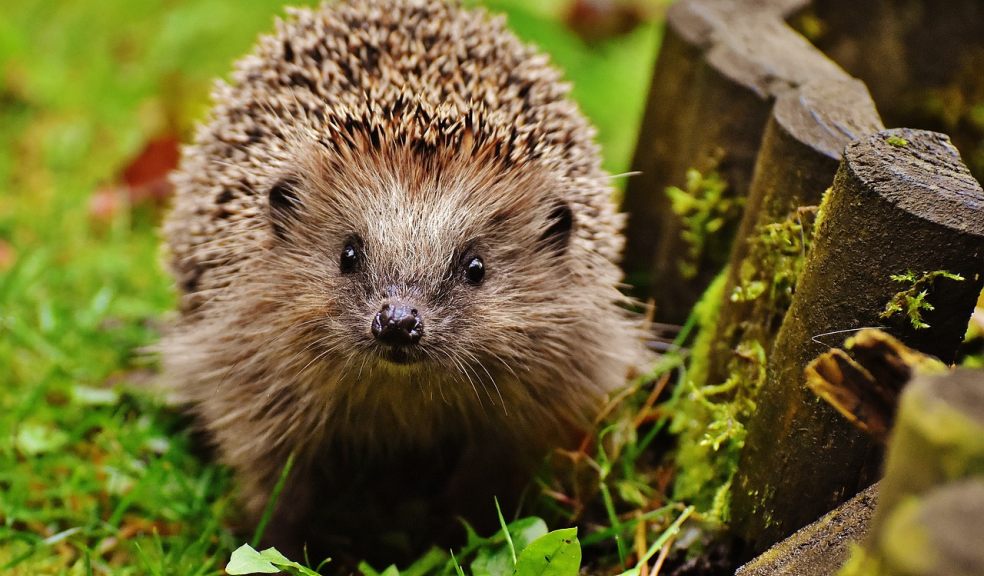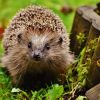
Hedgehog wins Favourite UK Mammal poll
The hedgehog has been voted the Favourite UK Mammal with a huge majority in the Royal Society of Biology’s public vote.
The UK’s only spiny mammal won with 35.9% of the 5,000 votes, more than double that of the Red Fox, who came in second place with 15.4%. The Red Squirrel came third with 11.4%, out of a shortlist of 10 charismatic UK mammals (full list below).
Henry Johnson, Hedgehog Officer, People’s Trust for Endangered Species (PTES) said: “We Brits seem to love hedgehogs for a whole range of reasons, including their cute appearance, their role as slug controllers and the way they have colonised our gardens with such aplomb. This is why it is so sad to see them decline, with one in three lost since the millennium.”
Threats to hedgehogs come mostly from us. In rural areas, our farmland increasingly lacks the diversity of habitats hedgehogs need and the invertebrates they feed on. In towns and cities green spaces are lost to development, paved over or increasingly fragmented. Hedgehogs are also very prone to road traffic accidents.
Henry Johnson said: “The first step is ensuring hedgehogs can access our gardens – this means ‘hedgehog highways’ at the base of fences and walls. Then the gardens themselves can be enhanced through log piles, compost heaps, ponds and nectar-rich plants."
Hedgehog Street, a joint project from PTES and the British Hedgehog Preservation Society, will be making 'Build a Hedgehog House' resources publicly available to encourage all those who have voted for the hedgehog, to help them survive hibernation.
Fiona Mathews, Chair of The Mammal Society said: "We are currently reviewing the conservation status of all British Mammals, including Hedghogs. Many people will find it surprising that we have very little information on where species as charismatic as hedgehogs are found. We suspect that they are now doing better in suburban areas than they are in farmland, but we really need more information. The public can help by submitting their records via our free Mammal Tracker App."
A total of 101 mammal species can be found in and around the UK. Some of these species have suffered serious declines. The poll was opened during Biology Week 2016 to raise awareness of UK mammals and the need for an increased conservation effort.
With the help of experts from PTES and The Mammal Society, the RSB developed a shortlist of 10 of the UK’s favourite mammal species (listed below). There are lots of other mammals we would have liked to include in our poll and all species are important. People can find out more about UK mammals and conservation projects on our website.
Mammals deliver a variety of benefits to our environment. For instance, many small mammals are ecologically important because they act as prey for bird species and mammalian carnivores. Conversely large mammals may be important in the maintenance of high biodiversity habitats through the impacts of grazing.
Professor David Macdonald CBE CBiol FRSB, Director of the Wildlife Conservation Research Unit at The University of Oxford said: “Each species, large or small, is a cog in nature’s system. But whether seemingly useful to people or not, each can be treasured because it is beautiful and interesting.
“All UK mammals will be bumping up against some inconvenient aspect of the 21st Century, and will need society’s support to prosper. For a nation that widely encourages others to protect wildlife in their communities, let us practise what we preach by nurturing the wildlife in our own backyards.”
Full Results: What is the Favourite UK Mammal?
Find out more about each mammal (and others) and how we can help to protect them, on our website: www.rsb.org.uk/UKMammalPoll and blog: http://blog.rsb.org.uk/category/uk-mammal-poll/
Hedgehog (35.9%)
Red Fox (15.4%)
These much maligned mammals are opportunistic and can make use of a variety of habitats. In the UK for instance, foxes have adapted very well to urban environments. Foxes hunt with keen senses of smell and hearing, and likely use the latter to find earthworms, which can make up a large portion of their diet.
Red Squirrel (11.4%)
Red squirrels were once common across the UK, but since the introduction of non-native grey squirrels in the 1870s their numbers have declined. The grey squirrels have contributed to the decline through competition (better feeders) and the spread and transmission of squirrelpox virus.
Scottish Wildcat (11.3%)
Despite resembling tabby cats, wildcats are larger, have bushier tails and have been dubbed ‘Tigers of the Highlands’. This mammal is rare, and the UK population could be as few as 400. The biggest threat is the domestic cat, as they cross-breed with wildcats to produce fertile offspring. This compromises the genetic integrity of the species, meaning it is tricky to find a ‘pure’ wildcat.
Otter (9.2%)
These mammals are well adapted to their semi-aquatic life. Otters have webbed feet, streamlined bodies and a muscular tail, allowing them to swim at a speed of about one metre per second. Otters dive underwater to catch small fish and can see just as well under water as they can above it. From a distance they resemble mink, but they are in fact much larger.
Pine Marten (3.8%)
The pine marten is one of the UK's rarest carnivores. These cat-sized mammals are very rare and not very well known. There are around 3,500 individuals in Scotland, but there could be fewer than 100 in England and Wales. Pine martens prefer woodland and are talented climbers, spending most of their time in trees. They can even leap up to four metres between branches!
Soprano Pipistrelle (3.6%)
Along with common pipistrelles, soprano pips are the bats that you are most likely to see. These animals weigh about the same as a 20 pence coin, they have a fast and hectic flight as they chase insects that they consume on the wing. A single individual can consume up to 3,000 insects in one night!
Water Vole (3.6%)
Water voles are the largest UK vole species, and are often confused with brown rats. In fact Ratty (of Wind in the Willows) was actually a water vole! Water voles are one of the UK's fastest declining mammals and used to be found in almost every waterway in England, Scotland and Wales. It is thought that they have been lost in up to 90% of these sites.
Bottlenose Dolphin (2.9%)
Did you realise that there are dolphins in the UK? There are actually several hundred bottlenose dolphins in UK waters. Dolphins are intelligent mammals with complex social relationships. Females can even act as midwives, helping other females give birth by pushing the calf to the surface to breathe.
Beaver (2.8%)
Beavers became extinct in the UK in the 16th century, largely due to extensive hunting for food, fur and even their scent glands. Beavers are ‘keystone species’ as they have a disproportionately large effect on the rest of the ecosystem. This can create favourable conditions for many other species to live. Small numbers of beavers have been reintroduced to the UK due to the range of benefits they provide to both wildlife and humans.



















